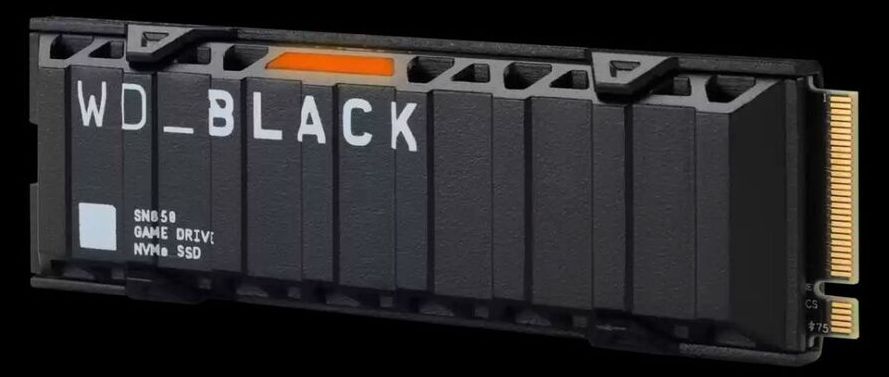Future chips may feature watercooling integrated into the silicon.
TSMC is in the process of testing and designing water cooling delivery straight to the heart of your future chips — a mandatory exploration in wake of vertically-integrated silicon.


A team of researchers affiliated with multiple institutions in China, working at the University of Science and Technology of China, has achieved another milestone in the development of a usable quantum computer. The group has written a paper describing its latest efforts and have uploaded it to the arXiv preprint server.
Back in 2019, a team at Google announced that they had achieved “quantum supremacy” with their Sycamore machine—a 54 qubit processor that carried out a calculation that would have taken a traditional computer approximately 10000 years to complete. But that achievement was soon surpassed by other teams from Honeywell and a team in China. The team in China used a different technique, one that involved the use of photonic qubits—but it was also a one-trick pony. In this new effort, the new team in China, which has been led by Jian-Wei Pan, who also led the prior team at the University of Science and Technology has achieved another milestone.
The new effort was conducted with a 2D programable computer called Zuchongzhi—one equipped to run with 66 qubits. In their demonstration, the researchers used only 56 of those qubits to tackle a well-known computer problem—sampling the output distribution of random quantum circuits. The task requires a variety of computer abilities that involve mathematical analysis, matrix theory, the complexity of certain computations and probability theory—a task approximately 100 times more challenging than the one carried out by Sycamore just two years ago. Prior research has suggested the task set before the Chinese machine would take a conventional computer approximately eight years to complete. Zuchongzhi completed the task in less than an hour and a half. The achievement by the team showed that the Zuchongzhi machine is capable of tackling more than just one kind of task.

In 2015, after 85 years of searching, researchers confirmed the existence of a massless particle called the Weyl fermion. With the unique ability to behave as both matter and anti-matter inside a crystal, this quasiparticle is like an electron with no mass. The story begun in 1928 when Dirac proposed an equation for the foundational unification of quantum mechanics and special relativity in describing the nature of the electron. This new equation suggested three distinct forms of relativistic particles: the Dirac, the Majorana, and the Weyl fermions. And recently, an analog of Weyl fermions has been discovered in certain electronic materials exhibiting a strong spin orbit coupling and topological behavior. Just as Dirac fermions emerge as signatures of topological insulators, in certain types of semimetals, electrons can behave like Weyl fermions.
These Weyl fermions are what can be called quasiparticles, which means they can only exist in a solid such as a crystal, and not as standalone particles. However, as complex as quasiparticles sound, their behavior is actually much simpler than that of fundamental particles, because their properties allow them to shrug off the same forces that knock their counterparts around. This discovery of Weyl fermions is huge, not just because there is finally a proof that these elusive particles exist, but because it paves the way for far more efficient electronics, and new types of quantum computing. Weyl fermions could be used to solve the traffic jams with electrons in electronics. In fact, Weyl electrons can carry charges at least 1000 times faster than electrons in ordinary semiconductors, and twice as fast as inside graphene. This could lead to a whole new type of electronics called ‘Weyltronics’.

Performance recovered!
Making good on its promise, Western Digital has deployed a new firmware for the company’s WD Black SN850 SSD, which is currently one of the best SSDs on the market. The latest firmware will restore the SN850’s write performance when the drive is installed on a M.2 slot that’s connected to AMD’s X570 chipset.
The SN850 is one of the fastest SSDs around right now. However, users were reporting a performance loss of over 40% if the SSD resided on a M.2 slot that doesn’t directly communicate with the Ryzen processor. We don’t see the issue affecting users that have the SN850 as their primary drive. But for users that have multiple SSDs and have the SN850 on an M.2 slot linked to the AMD X570 chipset, it could be a huge problem.



WTF?! On Thursday the Security Service of Ukraine (SSU) reported that they had shut down a cryptomining operation in the city of Vinnytsia, seizing over 500 GPUs and 50 processors — and a bunch of Playstation 4s. Consoles built on 2013-era technology might not be great at mining, but they don’t need to be when you have 3800 of them.
Although the market for GPUs is starting to improve, and dedicated ASICs might be on the way to relieve demand, it seems that one group of enterprising cryptocurrency miners have turned to last-gen console hardware to get things done.
From the photos provided by the SSU, it looks like these consoles are of the PS4 Slim variety, the 2016 refresh of the original console from three years prior. Mostly obsolete for newer games, it’s not at all surprising that so many could be sourced en masse so easily.

What the FENCE program hopes to do is to create event-based cameras that are more intelligent thanks to the use of brain-mimicking or neuromorphic circuits. What these do is to drastically reduce the amount of data that needs to be handled by disregarding irrelevant parts of the image. Instead of dealing with an entire scene, the event-based camera focuses only on the pixels that have changed.
DARPA has announced the start of the Fast Event-based Neuromorphic Camera and Electronics (FENCE) program, which is designed to make computer vision cameras more efficient by mimicking how the human brain processes information. Three teams of scientists led by Raytheon, BAE Systems, and Northrop Grumman, are tasked with developing an infrared (IR) camera system that needs to process less data, operates faster, and uses less power.
Modern imaging cameras are growing increasingly sophisticated, but they are also becoming victims of their own success. While state-of-the-art cameras can capture high-resolution images and track objects with great precision, they do so by processing large amounts of data, which takes time and power.
According to DARPA, this is fine when the task is something like tracking an airplane in a clear blue sky, but if the background becomes cluttered or starts to change, as is often the case in military operations, these cameras can soon be overwhelmed.

ASML’s machine has effectively turned into a choke point in the supply chain for chips, which act as the brains of computers and other digital devices. The tool’s three-continent development and production — using expertise and parts from Japan, the United States and Germany — is also a reminder of just how global that supply chain is, providing a reality check for any country that wants to leap ahead in semiconductors by itself.
A $150 million chip-making tool from a Dutch company has become a lever in the U.S.-Chinese struggle. It also shows how entrenched the global supply chain is.

Quantum computers could make modern day Macs look like the very first Commodore computer.
Initial tests on Google and NASA’s quantum computing system D-Wave showed that it was a staggering one hundred million times faster than a traditional desktop.
Hartmut Nevan, director of engineering at Google, claimed: “What a D-Wave does in a second would take a conventional computer 10000 years to do.”